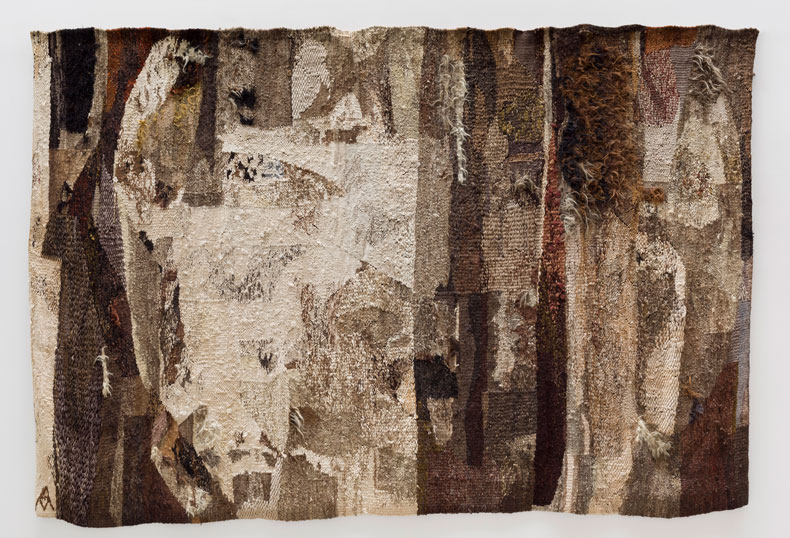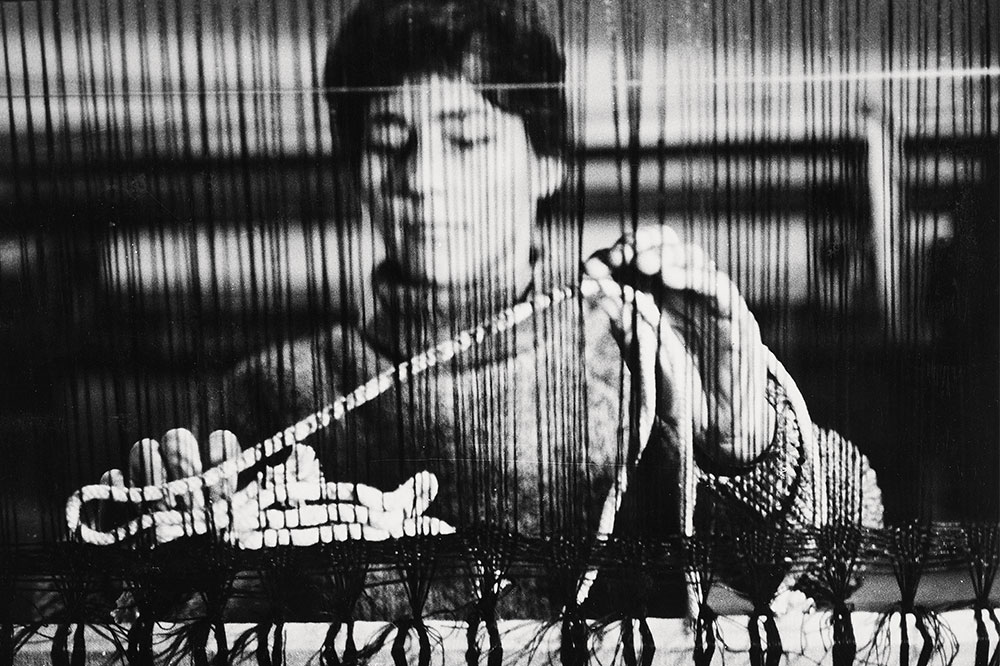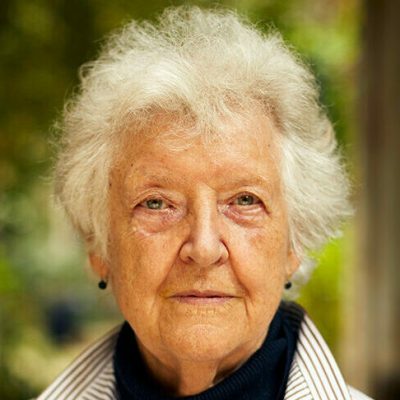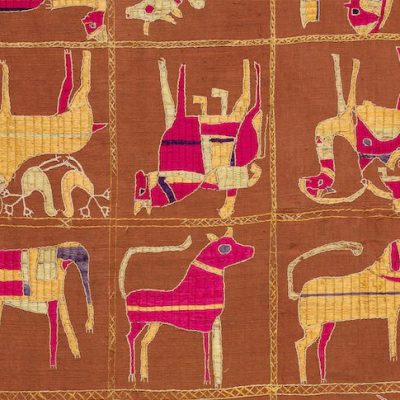A circular plane of weave – made from the fibre of a flowering plant called sisal – is suspended from the ceiling by one end. Its fibres are hand-dyed the golden ochre of corn, but there are others nearby in the red of fresh blood, murky deciduous brown and obsidian black. Attached at several points by wires, the weave folds in on itself, creating a cleft or a chamber that holds rope, which is tied in knots or else twisted and trailing to the floor. It is hard to look at the work of Magdalena Abakanowicz without thinking of bodies, in parts or wholes. In Abakan Yellow (1970), one of a series of large-scale fibrous ‘Abakan’ sculptures, the elliptical cleft conjures an image of vulvas, its rope entrails or flaxen hair.
‘Every Tangle of Thread and Rope’ at Tate Modern presents an overview of the Polish artist’s five-decade career with a particular focus on a transformative period in the late 1960s when her weaving became sculptural, extending into installation art, which she called ‘situations’, and later ‘environments’.
Educated in painting and weaving at the Academy of Plastic Arts, Warsaw, in the early 1950s, Abakanowicz was destined to toe the line between fine art and applied arts. Large-scale woven pieces like Tapisserie 21 brune from the early 1960s marry constructivist composition with a tapestry tradition. Abakanowicz lived most of her life under a strict Soviet regime in Poland, but thanks to the support of the state-sponsored Association of Polish Artists, which championed craft, she was able to test the limits of weaving, developing an improvisatory technique rather than following a template. She soon became a leader in the New Tapestry movement of the 1960s, winning the Golden Medal in Applied Arts in Sao Paulo in 1965, which allowed her and her husband to move from their one room apartment in Warsaw into a larger one. With that, her work grew.
Abakan Yellow (1970), Magdalena Abakanowicz. © Fundacja Marty Magdaleny Abakanowicz Kosmowskiej i Jana Kosmowskiego, Warsaw.

Abakanowicz’s work, particularly the Abakan series, is often described as ‘monumental’, evoking something large in scale but also solid and unmoving and typically rendered in concrete, marble or stone, whereas her work is ambiguous in form, bristling in texture and most often suspended from the ceiling or hung on the wall.
And then there is her subject – bodies. ‘We are fibrous structures,’ she said of living organisms. In the exhibition, a forest of ‘Abakans,’ presented in the enigmatic darkness of the gallery space, appear lifelike, slipping between something deciduous and something human; while the wall hanging Pregnant (1970–80), with its bloody brown surface, is puckered at the centre like a naval or suckling mouth. Employing the sinuous threads of sisal, hemp and horsehair, an organic palette and biomorphic forms in works like Embryology (1978-80), Abakanowicz plays with the body as both material and subject but also process. We bear witness to the physical demands upon her body and the deft work of her hands weaving and stitching fibre into fabric in a screening of the film Abakany (1969)– a collaborative endeavour between the artist, the film director Jaroslaw Brzozowski and the composer Bogusław Schaeffer that was completed, after Brzozowski’s sudden death, by Kazimierz Mucha.
Embryology (1978–80), Magdalena Abakanowicz. Tate, London. © Fundacja Marty Magdaleny Abakanowicz Kosmowskiej i Jana Kosmowskiego, Warsaw.

Despite being born into an aristocratic family, Abakanowicz shared in the national trauma and fallout of the Second World War. She was deeply shaken by an attack on her family home in the Polish forest, in which her mother’s arm was shot off. She developed an interest in severed limbs and the dismembered body, but in her work, these appear more as fragments of memories than representations of flesh. ‘The rope to me is like a petrified organism, like a muscle devoid of activity,’ she said in 1976. The indelible mark of these events from her childhood emerges in the sinuous twine and in the stitches between folds, like ligatures.
Abakanowicz spoke about using ‘fabric for the shape of the human body’, but the work is at its best when the body is not shown figuratively, implied rather than stated. In one room of the exhibition, a series of fibrous wall hangings from the mid 1960s mark the moment in Abakanowicz’s practice when the formal dimensions of loom-woven tapestries transformed into indeterminable shapes – rounded like an almond or a husk, with fissures straight through the fabric that expose the thread. In these works, such as Assemblage noir (1966) and Diptère (1967), the fabric begins to pull away from the wall. It furls, unfurls and rises in tufts. These works are accompanied in the exhibition by a series of lesser-known works on paper in gouache, ink, collage and charcoal that ‘fulfilled the same imperative need to express a state of transition and becoming,’ as Magali Junet writes in the exhibition catalogue. They evoke a space like a womb or chrysalis.
During the 1980s and ’90s Abakanowicz’s work grew into large-scale installations using timber and steel, but it is not the size of her works that impresses as much as the expressive potential of weaving. Abakanowicz’s works – shifting, splitting, enfolding form into form – changed the perception of sculpture through the flex of their fibre. What could be more anti-monumental than that?
Helena (1964–65), Magdalena Abakanowicz. © Fundacja Marty Magdaleny Abakanowicz Kosmowskiej i Jana Kosmowskiego, Warsaw

‘Magdalena Abakanowicz: Every Tangle of Thread and Rope’ is at Tate Modern, London, until 21 May 2023.



